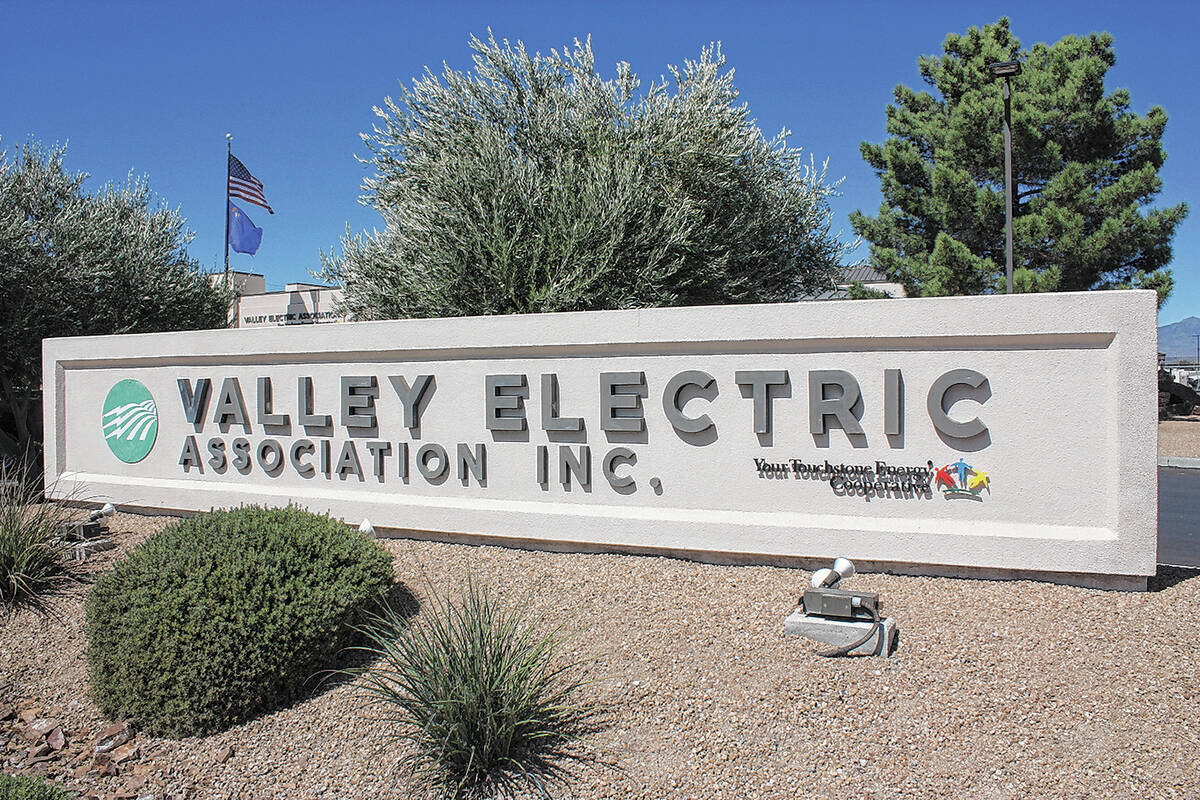Why Valley Electric fees will rise 70 percent next month
Valley Electric Association Inc. is expected to increase its residential, small commercial and general service fees by more than 70 percent next month as the cost of fuel rises.
The Pahrump nonprofit power co-op posted on its Facebook page that the fees would go up by $15 — from $37.50 to $52.50 — beginning May 1.
It follows a decision by the VEA’s board of directors last month that aims to bring revenue streams inline with rising costs to operate the business.
“Inflation, the doubling in price of natural gas, and the tripling of capacity pricing are key components of the rate increase to the basic service charge,” VEA officials told the Pahrump Valley Times. “Valley is continually looking at ways to save our members money, and we are doing everything possible to mitigate the impact of the drastically changing power-supply market.”
VEA serves more than 45,000 customers across a 6,800-square-mile area in southwest Nevada, according to its website. The electric company has laid off 50 employees in the past years, bringing its workforce from 175 to 125 employees. While the layoffs may have offset some operational expenses for the co-op, they haven’t been able to keep electricity costs down for consumers.
Customers are typically paying more for power than years past due to a number of factors, including regulation initiatives in the industry, such as the transition from carbon to green energy. Cheaper coal-fueled power plants have been shutting down and as demands for cleaner, renewable energy have increased, there are start-up costs for power companies to convert to new energy sources which are being passed on to consumers.
Gas, natural gas and propane prices also are on the rise.
Over the past two years, power-supply costs have increased more than $10 million, VEA officials said. While the company has come up with $5.8 million of that, VEA members will pay for the remaining $4.2 million through price hikes.
A graph that tracks VEA revenue from 2019 to Jan. 31, 2022 shows that VEA’s revenue peaked in August 2021 with $9.4 million, compared to August 2020 when revenues hit an $8.7-million low. The graph does not show the cost of creating energy, or if revenues were enough for VEA to pay back its long-term debt. As of Jan. 31, VEA owed nearly $215 million.
A chart tracking VEA’s income, shows that the company has largely operated in the red.
VEA officials acknowledged the price hike could be a financial burden to customers during the summer months when energy demands peak. They offered tips on how customers can mitigate energy loss to help keeps costs under control:
- Increase home and business thermostats by two to three degrees in the summer and to reduce by two to four in the winter.
- Run full loads of dishes and laundry cycles. Instead of running multiple loads of laundry throughout the week, run less loads with more clothes. Kids may be happy to hear that they need to load the dishwasher less often, but with more dishes.
- Reduce the water heater temperature to 120 degrees, as it’ll require less energy to heat up. Take quicker showers and leave some hot water for the rest of the house.
- Turn off all lights and appliances whenever possible, especially when they’re not in use.

















